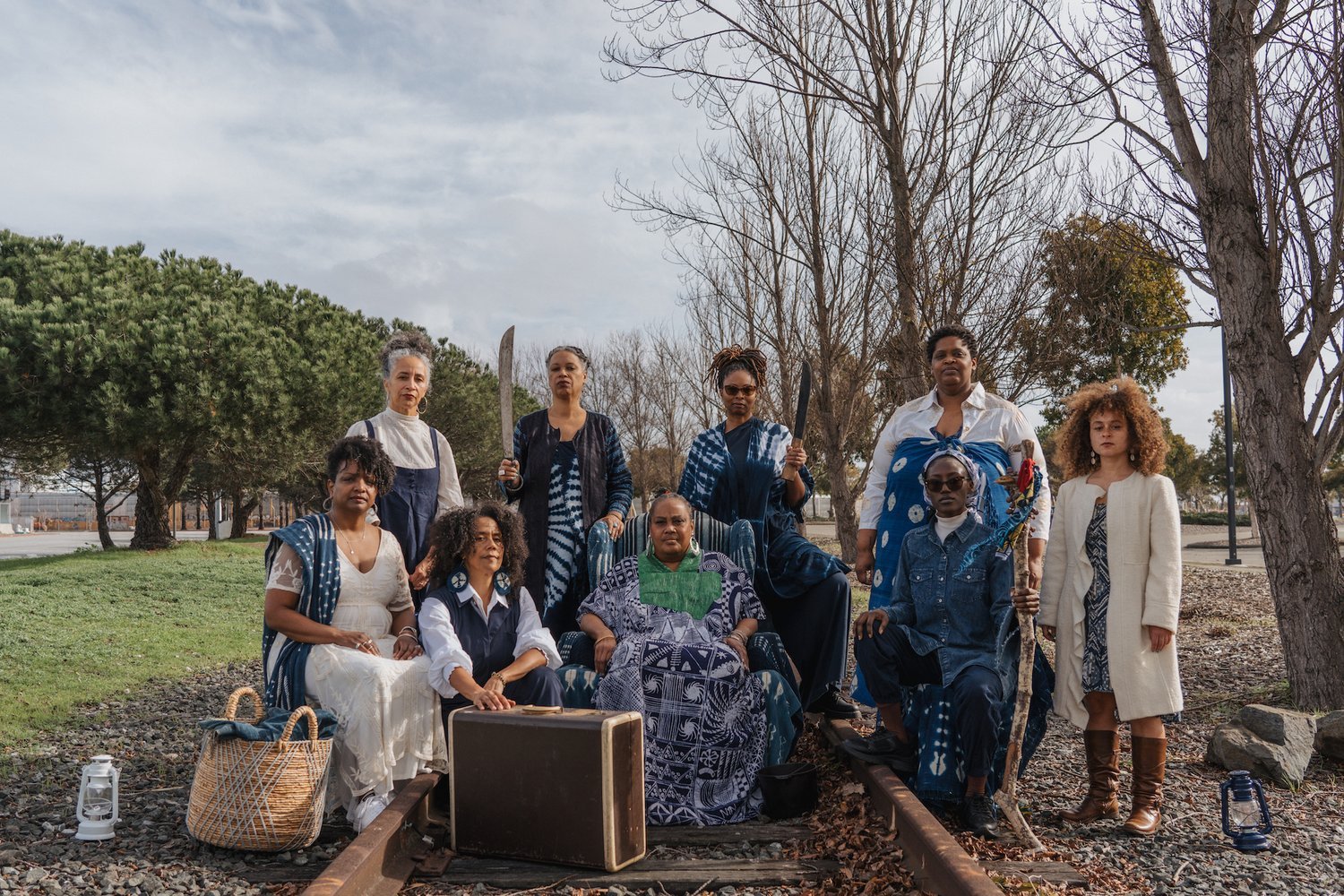House/Full of Black Women Safe House
Led by Amara Tabor Smith and Ellen SebasƟan Chang, a magnificent group of Black women gathered around a table at the orange House on the orange street talking sharing, singing, birthing, grieving, laughing, eating, crying, living, screaming, dying, breathing...Conjuring.
Photography by Robert Sweeny
InstallaƟon Design: Shelley Davis Roberts
Egungun design: Deyonna Tucker, Dana Kawano, Yoshi Asai
Media stand Yoshi Asai.
Seven years later, the House/Full of Black Women Safe House is a culmination of manifesting well‐being, rest and healing for Black women and girls amid their displacement and trafficking. It brings together ongoing themes and ideas threaded throughout 15 Episodes of ritual dance performance, processions and installaƟons dedicated to Black women across all gender spectrums and idenƟƟes.
The intense, sƟrring of energy as gentrificaƟon tries to erase our beloved Oakland’s Blackness has made House/Full of Black Women unapologeƟc in our arƟsƟc disrupƟon. We quesƟon. We prod. We insist. In this final episode, And This Too Shall Pass, what seems like the end is the beginning of a new journey to just “Be”. Be free. Be enough. Be safe.
What does it mean to be safe? Is it a desƟnaƟon? Is it a feeling? Is it a state of being or percepƟon? This safe house installaƟon quesƟons the delicate balance between being and feeling safe. What we know for sure is that within the beauty that is Oakland, there is an ugliness one cannot comprehend happening right outside this gallery door. Upon entering, de‐escalaƟon from the chaos is facilitated through elements inspired by nature. A soŌ cascading waterfall of wispy branches offers ethereal wonderful trees. Bright green, vibrant moss reminds us that in the right condiƟons we can grow, flourish and live freely. Indigo blue has been a constant source of inspiraƟon for House/Full. More than just a color, indigo is rich with history and celebrates the wealth and power indigo seeds and cloth once brought to West African women who were and remain prodigious masters of the complex texƟle process. The floaƟng scroll holds precious dreams shared from Episode 1 of Black Women Dreaming where we insisted on a rest and an opportunity to dream as a means of resistance and empowerment.
It is our right to rest, sleep deeply and replenish our spirits.
Passing through the deep blue curtains is where the balance of being and feeling comes into quesƟon. It marks a transiƟon from above to below where the roots of trees burrow into the earth to find precious water; symbolically anchoring us as we thrive and struggle in the light. It is an immersion from air into the depths of the vast indigo blue ocean where overwhelm could easily prevail, but the power of Yemaya, the protector of women washes over us. On the other side of the curtain, the larger‐than‐life Egungun resides as a powerful reminder to honor our ancestors whose bones may lay underground, but whose spirits soar. Each piece of fabric of the Egungun is unique, flawed and layered just as we are as individuals. The boƩom layer of roots represents the depth of searching for belonging, value and meaning, those things that anchor us. We draw from the strength and fearlessness of Harriet Tubman and her deep knowing of freedom. Her wisdom sƟll leads the way along the delicate pathway to being and feeling free and safe. “I freed a thousand slaves. I could have freed a thousand more if only they knew they were slaves.” Harriet Tubman
Slow. Stop. Listen. The journey will be all things to some and nothing to others. Slow. A flow of rocks narrows with intenƟon to the entry passage so that you may do the same. Stop. You are welcome here. Enter slowly and gently. Listen. As you leave, take a breath in a moment of self‐reflecƟon. What are you conjuring out in the world?

